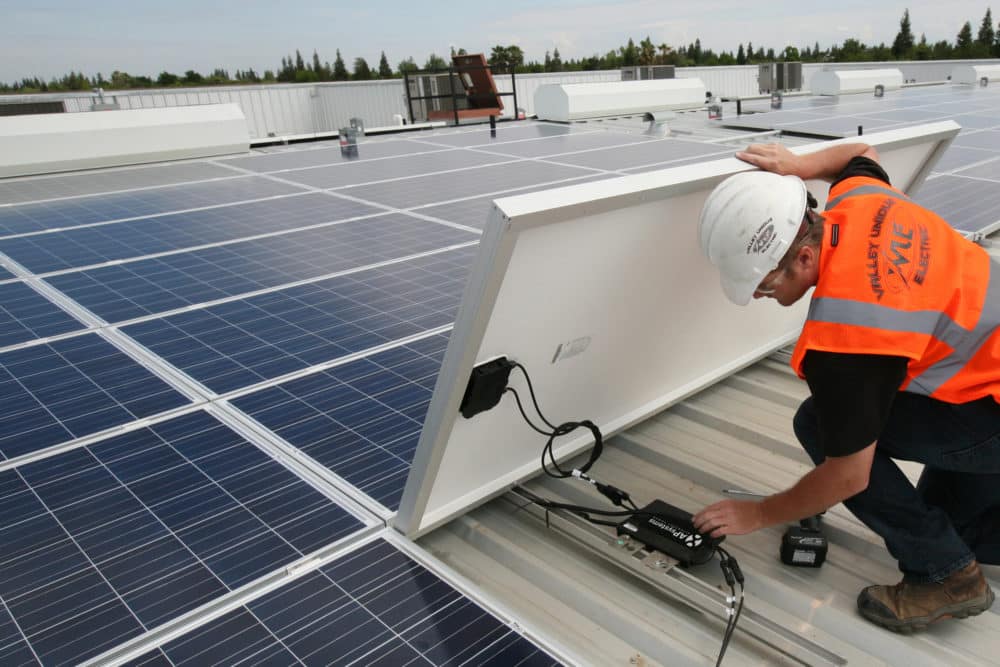
What can cause a solar microinverter to fail? Here’s Why
Solar microinverters are built to last, but like any piece of tech, they can fail over time. Issues often come from heat, electrical surges, or simple wear and tear.
Understanding common microinverter failure causes helps you spot potential issues early and keep your solar system running strong.
What can cause a solar microinverter to fail?
Microinverters fail due to heat, moisture, surges, poor installation, worn components, or outdated software.
Key Takeaway
- Heat, moisture, and poor installation are top microinverter killers.
- Electrical surges and outdated software add to the risk.
- Regular inspections, surge protection, and cleaning boost lifespan.
- Replace units when repairs no longer make sense.
Why Solar Microinverters Matter
Microinverters are the unsung heroes of your solar setup. Instead of one big inverter running the show, each panel gets its own.
That means if one panel struggles, the rest still pull their weight. You get steadier output, fewer weak spots, and a system that keeps humming even on cloudy days.
They’re also easier to monitor. With panel-level tracking, you know exactly where performance dips and can fix issues before they drain your power and your wallet.
Common Causes of Solar Microinverter Failure

- Overheating: Heat is the silent killer here. Microinverters tucked under panels get blasted with sun all day. Without good airflow, they cook. Keep panels clear and check ventilation if you want them to last.
- Moisture Intrusion: Rain and snow shouldn’t touch the electronics, but weak seals or cracked casings can let water in. Even a small leak messes with performance. Regular inspections and replacing worn gaskets keep things dry.
- Electrical Surges: Lightning or grid spikes hit harder than bad Wi-Fi. Microinverters can fry if surge protection isn’t in place. Adding a surge protector is a cheap insurance policy.
- Poor Installation: Loose wiring or sloppy connections can make the unit work overtime. That strain shortens its life. Always get a pro installer, and if you spot flickering or inconsistent output, call them back.
- Component Wear: Nothing lasts forever. Capacitors and semiconductors age, especially in harsh weather. You’ll notice reduced output or sudden shutdowns. Replacing the unit at this stage is usually smarter than patching it.
- Software Glitches: Modern microinverters rely on firmware to sync with the system. Outdated software can cause errors or disrupt communication. Checking for updates through your monitoring app is the cheat code here.
How to Identify Early Signs of Failure
If your solar output suddenly dips while the weather’s clear, that’s a red flag. Random system shutdowns or frequent error codes on your monitoring app? Same story.
Listen for odd buzzing sounds around the inverter. Spotting scorch marks or loose connections is another cheat code to catch problems early.
Act quickly, log the issue, reset if safe, and call a pro if it keeps happening. That’s how you keep your system from going full drama.
Preventing Microinverter Failures

Keeping your microinverters alive isn’t rocket science; it’s just smart upkeep. Regularly check for loose wiring or corrosion, because small issues snowball fast.
Don’t let dirt, leaves, or water pool around your setup. Clean panels and clear airflow keep things running cooler and longer.
Use surge protection to block power spikes, the silent killers of electronics. If your system throws error codes, don’t ignore them; fix them quickly.
And here’s the cheat code: schedule yearly pro inspections. A fresh set of eyes spots problems you’d miss. That’s how you flex a solar setup built to last.
When to Replace vs. Repair a Microinverter
If your microinverter quits once in a while, repair might be the quick fix. Loose wiring, small component failures, or minor connection issues can often be handled without a full swap.
But if it’s failing repeatedly, out of warranty, or holding back your system’s output, replacement is the smarter play.
A new unit gives you fresh warranty coverage and keeps your solar setup running smoothly without constant babysitting. Think of it like sneakers, you patch them once, but when the soles are gone, you grab a new pair.
Frequently Asked Questions
1. Why do microinverters fail early?
Most times, it’s heat or moisture sneaking in. Bad wiring and cheap parts can speed things up, too.
2. Can I fix one myself?
Not really. It’s safer to call a pro, since messing with high-voltage gear isn’t worth the risk.
3. How do I make mine last longer?
Keep panels clean, check connections, and get regular inspections. Think of it like a tune-up for your solar setup.
Conclusion
Microinverter failures usually come down to heat, moisture, or sloppy connections. The good news, you’ve got control over most of that. Keep your system clean, check wiring for wear, and don’t ignore warning lights.
Think of it like sneaker care; the better you maintain it, the longer it flexes. If something feels off, call a pro before a small hiccup snowballs. Staying ahead of the problem means your solar setup keeps cranking out power without the drama.

Leave a comment